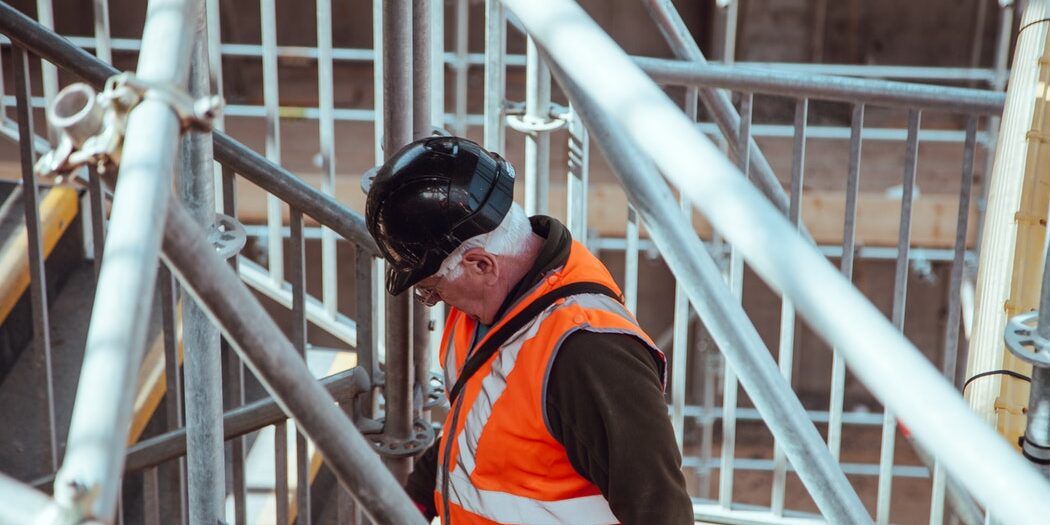The construction sector is one of the riskiest and accident-prone working sites and the highest-risk industry in terms of its operations. Workers at the building place are exposed to unnecessary risks that can result in injury or even death. They face different kinds of health and safety Hazards while employed day after day at their job sites. Recent literature shows that construction workers suffer two times as many work-related accidents and illnesses as the average for all other jobs in the industry.
The World Health Organization (WHO) has defined “work-related” diseases as multifactorial, suggesting that a variety of risk factors such as physical, work-related, psychosocial, individual and socio-cultural problems contribute to these diseases. The sum of these problems affects job efficiency and diminishes individual worker satisfaction. The growing advancement of the construction process, the wide variety of activities tend to continuously expose building workers to unfavourable ergonomic challenges. Ergonomics is sometimes ignored when talking about possible occupational hazards. It is because accidents caused by bad ergonomics aren’t as noticeable as injuries caused by height drops or toxic chemicals. Ergonomic injuries, however, can be just as harmful to the workplace if the hazards which cause them to remain uncontrolled. The main aim of doing good workplace ergonomics is to reduce the likelihood of musculoskeletal disorders ( MSDs). MSDs resulting from poorly built workstations that result in reduced productivity, lost time, income loss, increased claims for insurance, and pain and suffering that affects both employees and their friends and family.
Almost every accident and illness that occurs in the area of the Construction sector appears to be preventable as safety and health issues are closely linked to the organization of construction projects and manual tasks. Some of the risks in the construction industry can result from inadequate site communication protocols and inappropriate measuring technologies. It means construction firms can avoid the occurrence of these hazards and accidents if they are familiar with them and know how to recognise all such possible hazards. At the same time, construction Staff have to be mindful of their vulnerability to damage or injury at work. The safety and health performance in the construction industry should be dramatically enhanced to provide sufficient information on workplaces, manual activities, and ongoing training and education. True North Safety & Risk Management Inc. is British Columbia’s Safety training company. As an employer, we assist you by delivering occupational safety training courses such as first aid training and construction safety training, consultancy services and site inspections/audits to ensure that and applicable regulation, codes of conduct, as well as other guidelines, rules and procedures are followed. As qualified and certified trainers, we also provide the training stated to ensure that your employees are knowledgeable and equipped with the requisite information to carry out their assignments in a secure way.
Construction work usually includes the adoption of uncomfortable postures, lifting heavy objects, manual handling of heavy and irregular loads, constant stretching, bending and twisting of the body, working above the height of the arm, working below the knee, remaining in one position for a long time, ascending and falling, and pushing and pulling loads. True North Safety and Risk Management Inc., provides various Construction safety Training courses, required at other workplaces for the employees or workers trying to step up to their skill level. Here you get the expertise and skills required to perform your tasks professionally and healthily.
For unions, ergonomic operations may provide information to make leaders more informed of the advantages provided for both business health through ergonomic solutions and to protect their members and keep them active.
Building works are a physically demanding process, and construction activities expose workers to numerous ergonomic challenges. Many studies suggest that occupational ergonomics should have a workplace and work organization design modifications to suit the workers, to minimize workplace injuries and increase productivity. A lot of research findings also suggest that an increase in training programs is needed to reduce the onset of MSDs among the construction workers. Although significant improvements have been made to the acquisition of basic information, the construction industry still needs to demand further improvements in safety and health practices. It is important to identify early signs of any illness or disease on construction workers to take proactive steps to minimize accidents and to avoid irreversible harm to the health of job-related sickness due to construction jobs. In this sense, ergonomists and ergonomics research will encourage the importance of ergonomics in the construction sector, because they need to protect their workers when it comes to the danger that impairs the body structures of the employees during construction activities. Furthermore, the building cycle should be re-engineered and checked to strengthen its active environment against MSD.







